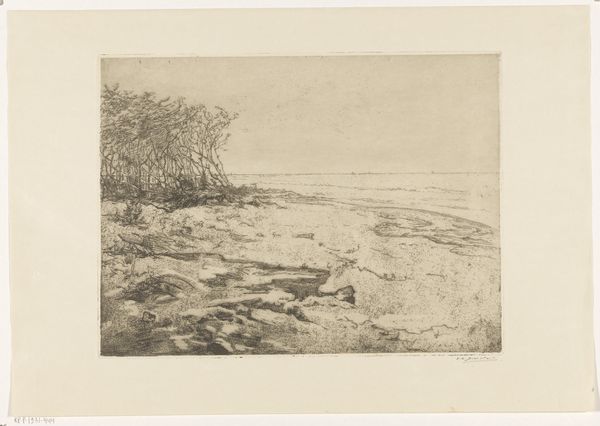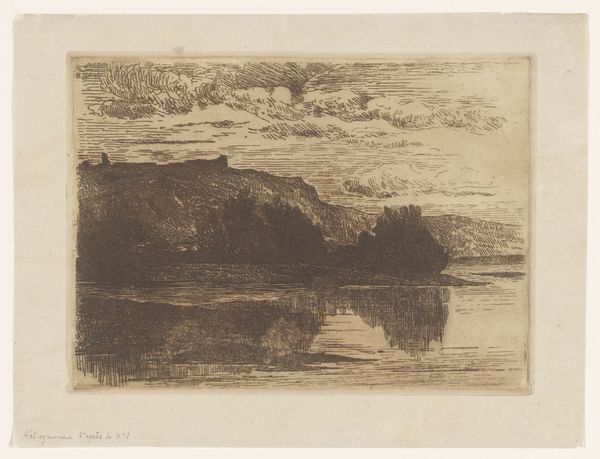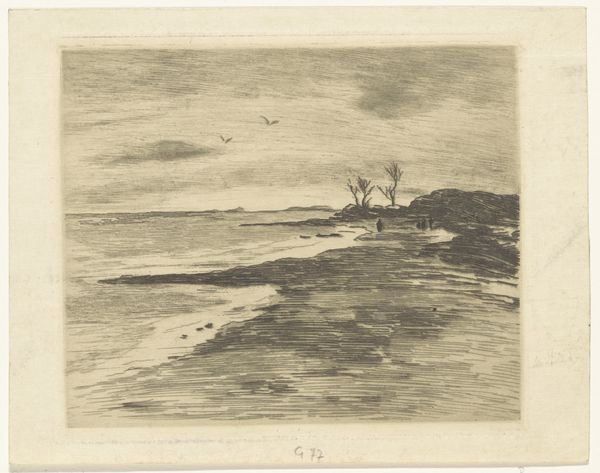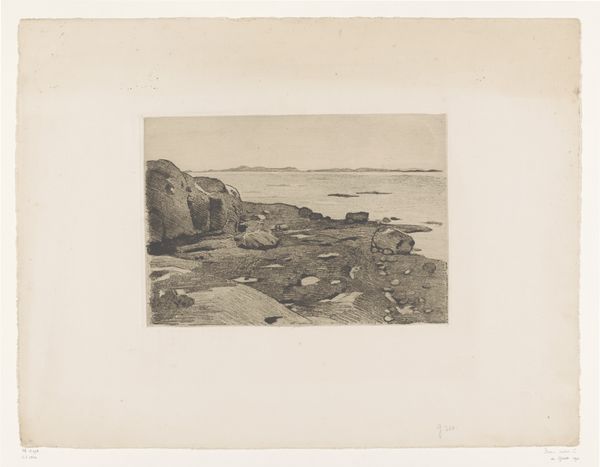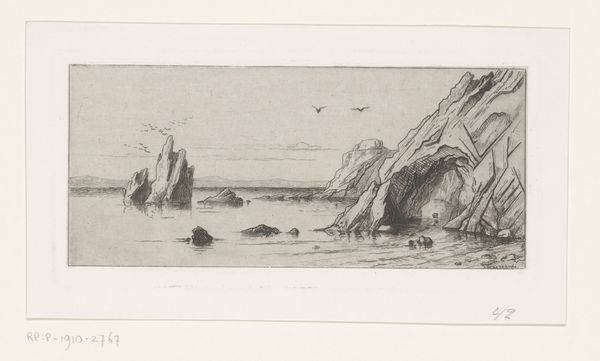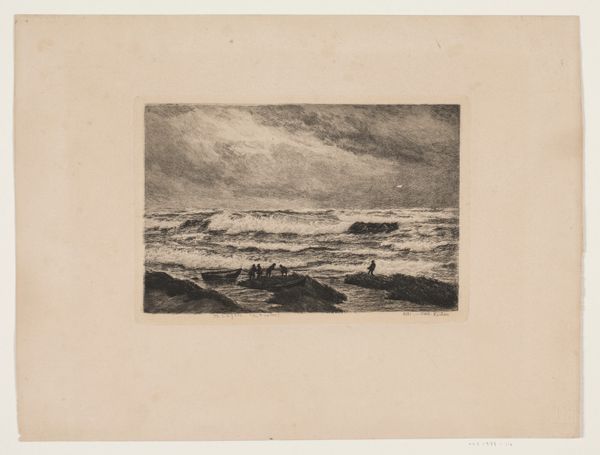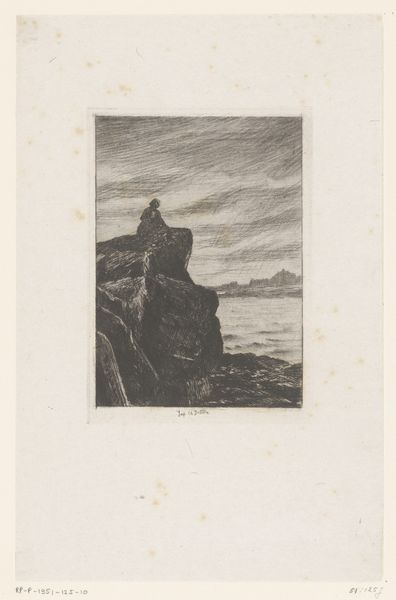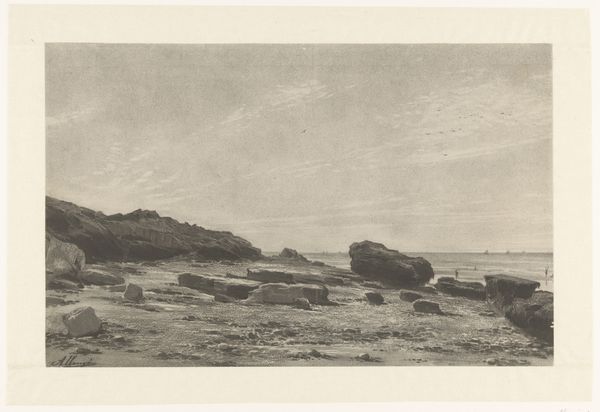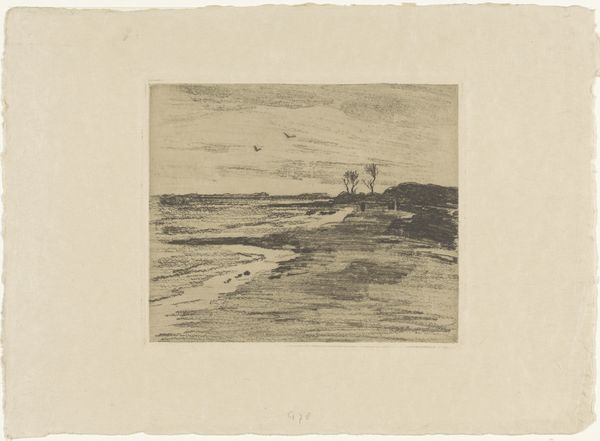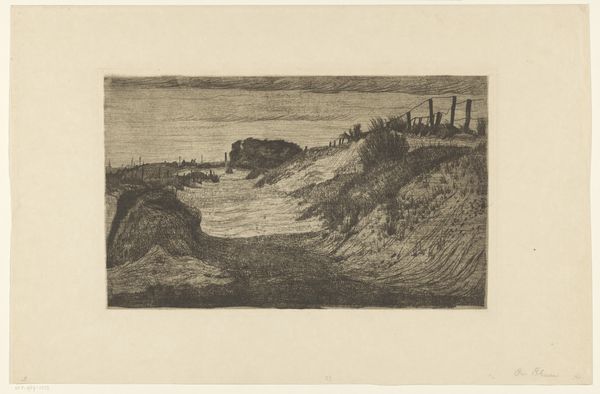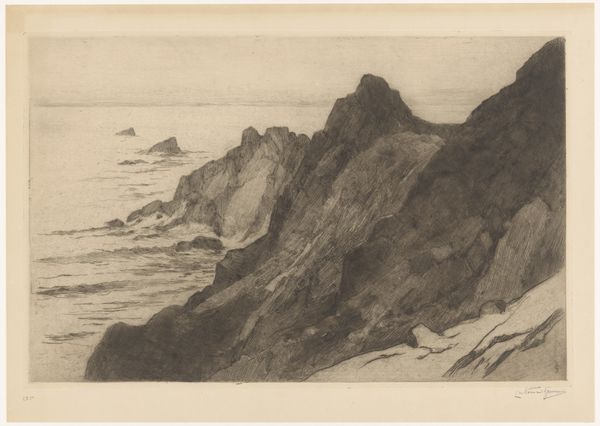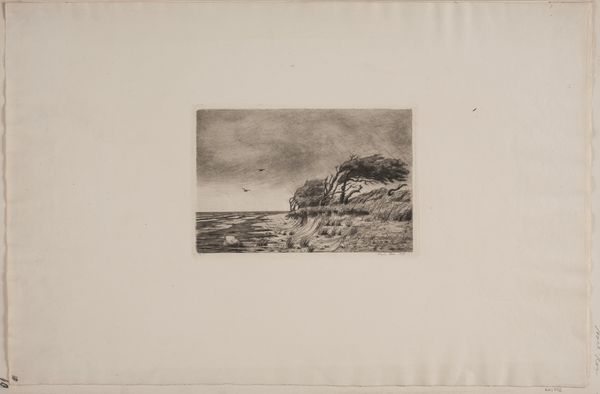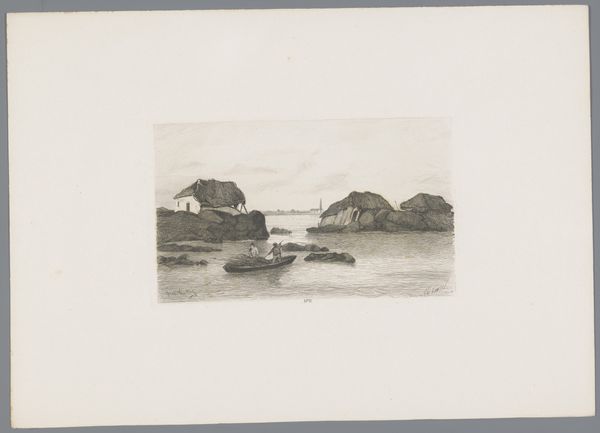
Dimensions: height 101 mm, width 162 mm
Copyright: Rijks Museum: Open Domain
Editor: This is a print entitled "Zonsondergang aan zee," or "Sunset at Sea," created sometime between 1850 and 1900. It looks like an etching. There’s a really serene, almost melancholic mood to it. What do you see in this piece, in terms of composition? Curator: Observe how the artist distributes tonal values across the picture plane. Notice the darker masses of the headland on the right juxtaposed against the luminous glow of the setting sun, almost centrally positioned. It is precisely through variations of the line in the etching process, by varying pressure and acid exposure, that this is possible. Editor: So it’s the contrast between light and dark that creates that atmosphere? How would you read the marks, lines, and forms here? Curator: Indeed. The formal vocabulary articulates and animates the scene. Consider the texture of the rocks, achieved through a dense accumulation of hatched lines, versus the relatively sparse lines used to represent the water, conveying a sense of stillness and reflection. Even the marks of the sky give us this feeling, can you tell me why? Editor: Because they guide our eyes. There’s that interplay between smooth surfaces and jagged edges to indicate where the horizon begins? So you're suggesting that this technique itself enhances our engagement with the natural setting? Curator: Precisely. By manipulating the formal elements, the artist translates their observation of the physical world. And with attention to the effects of light, the texture. Are the clouds full and about to burst or drifting gently across? The materiality here becomes integral to its interpretation. Editor: I've certainly never looked at the horizon and thought about pressure of etched lines. The way the composition, line, and tone all come together to express something beyond the surface... it gives me so much to think about. Curator: The ability to apprehend the artist's technique makes viewing far more enriching, doesn't it? I'm glad we've uncovered this together.
Comments
No comments
Be the first to comment and join the conversation on the ultimate creative platform.
